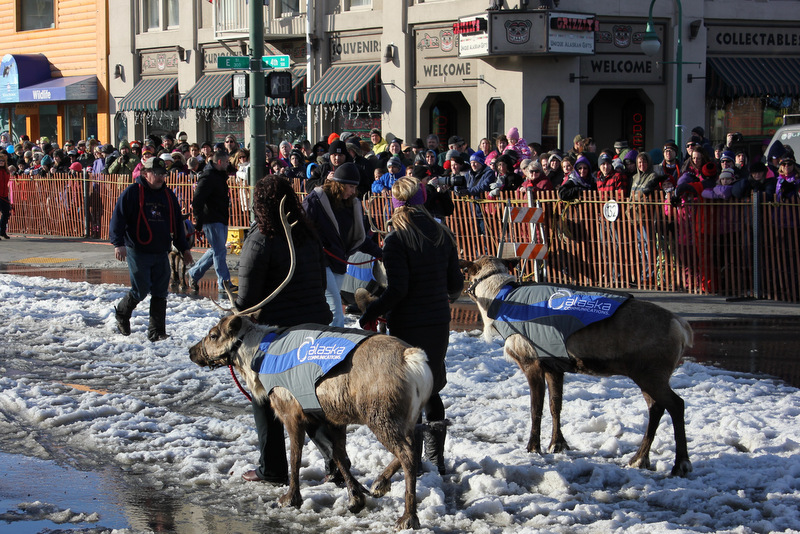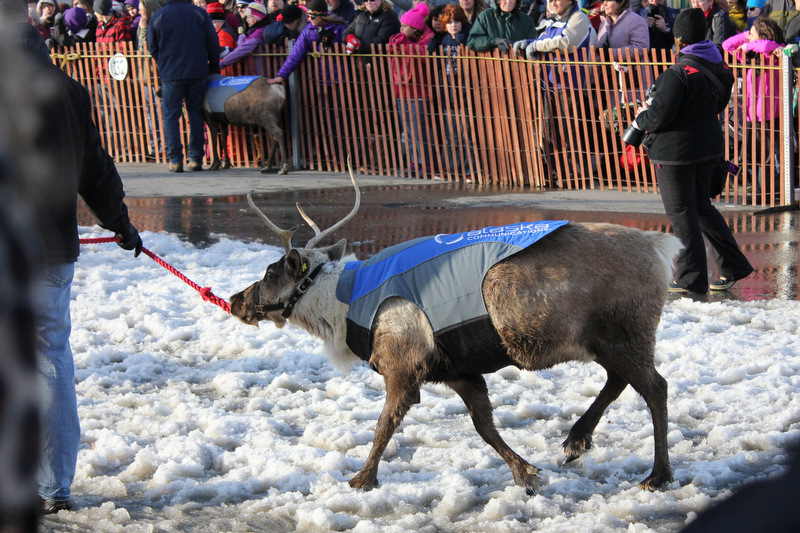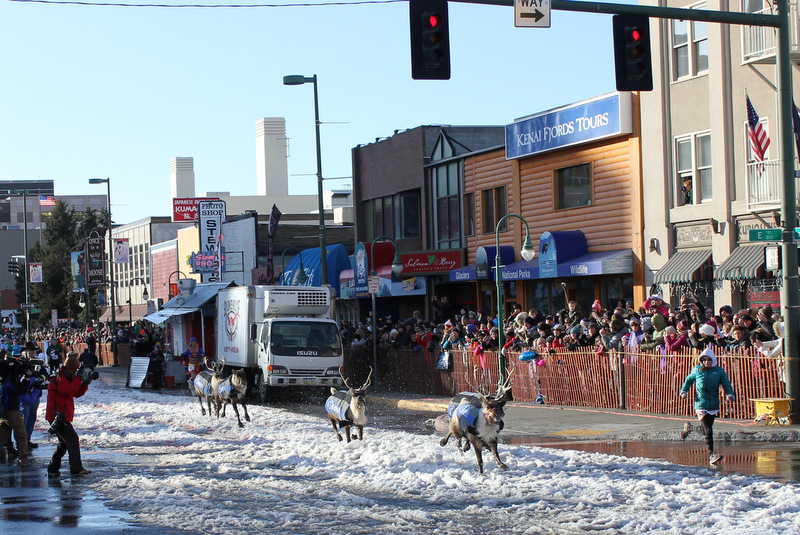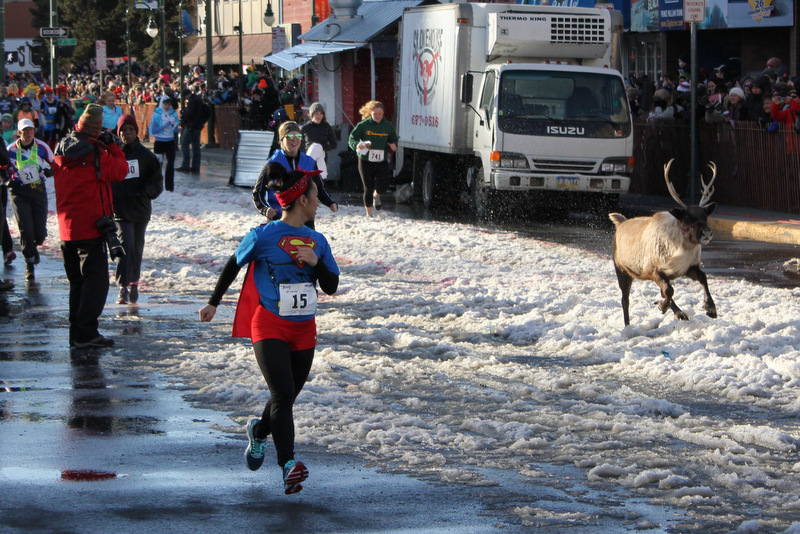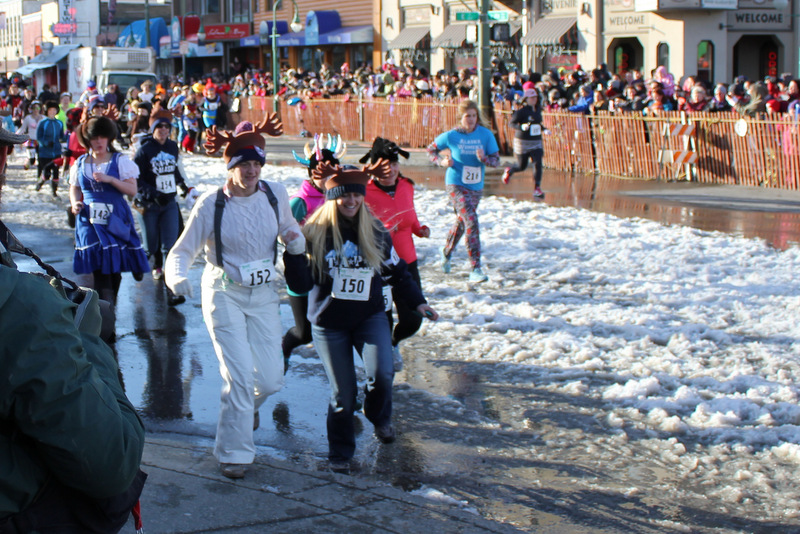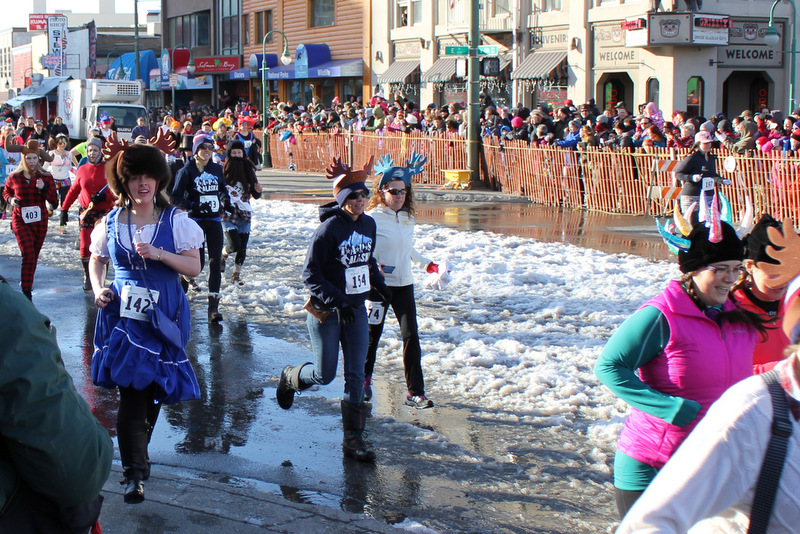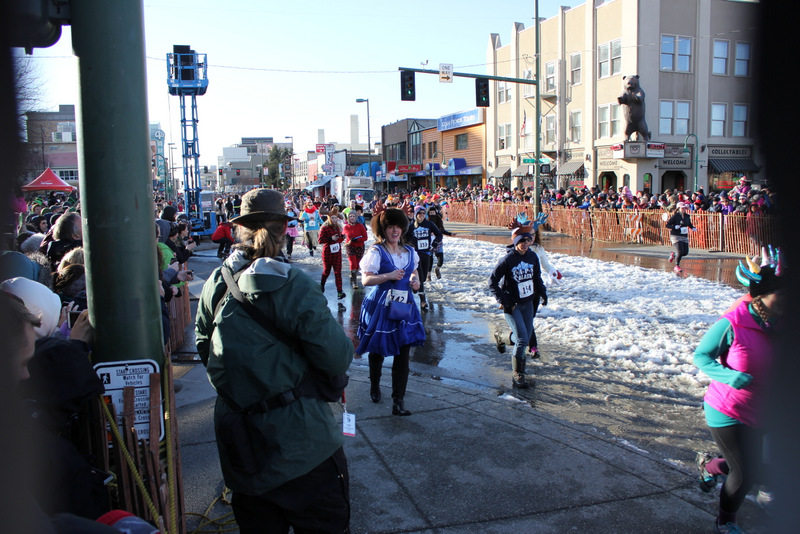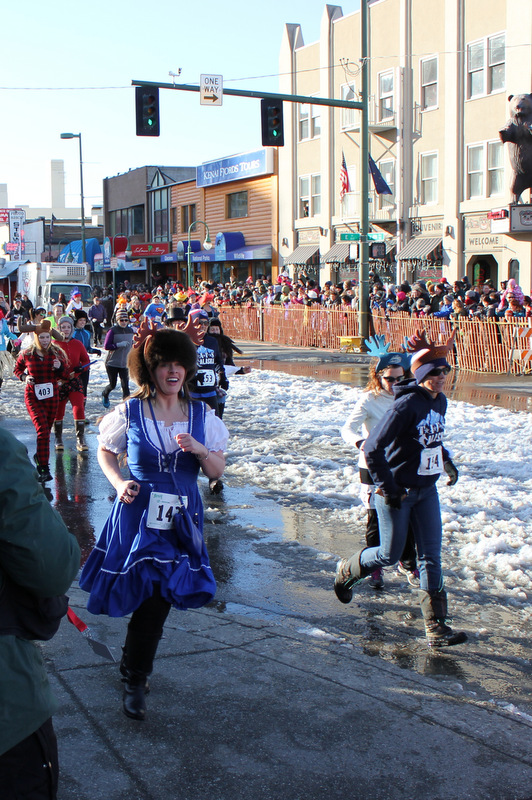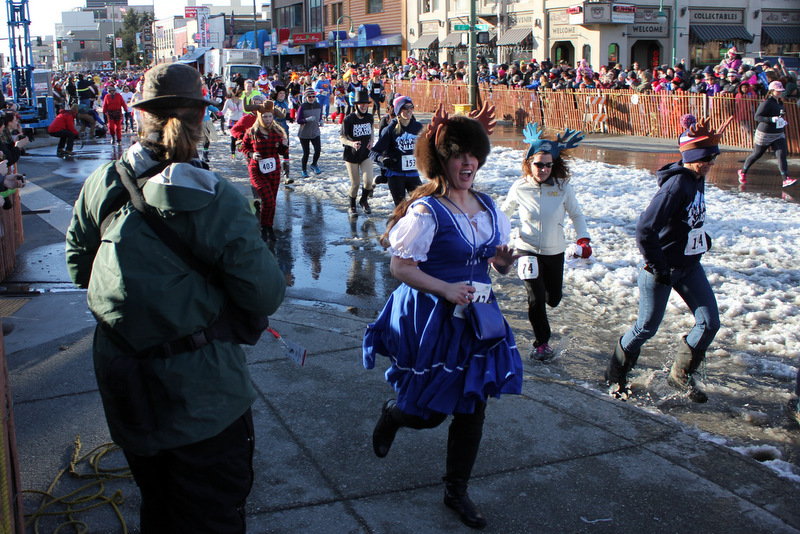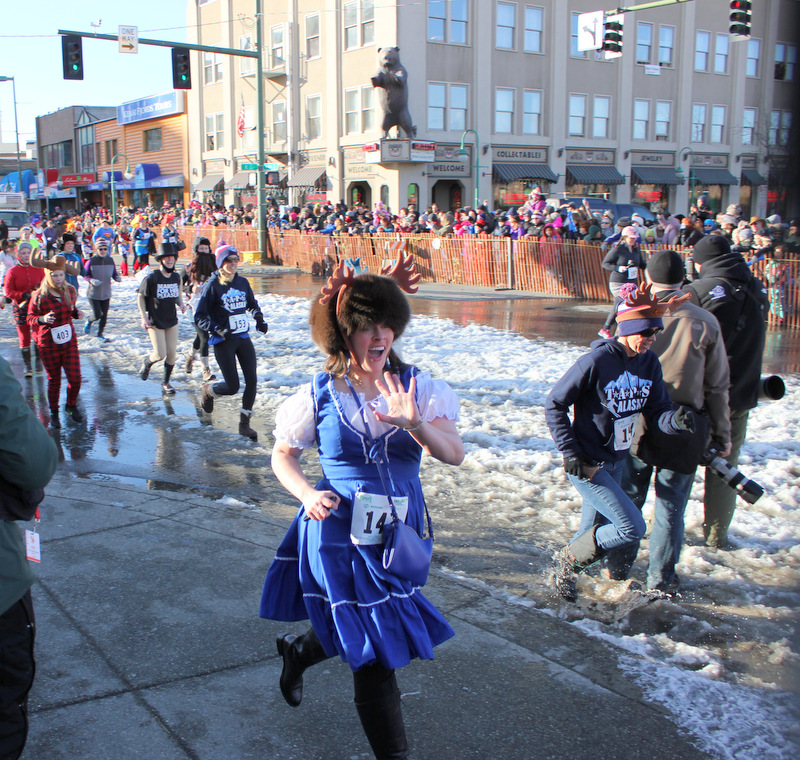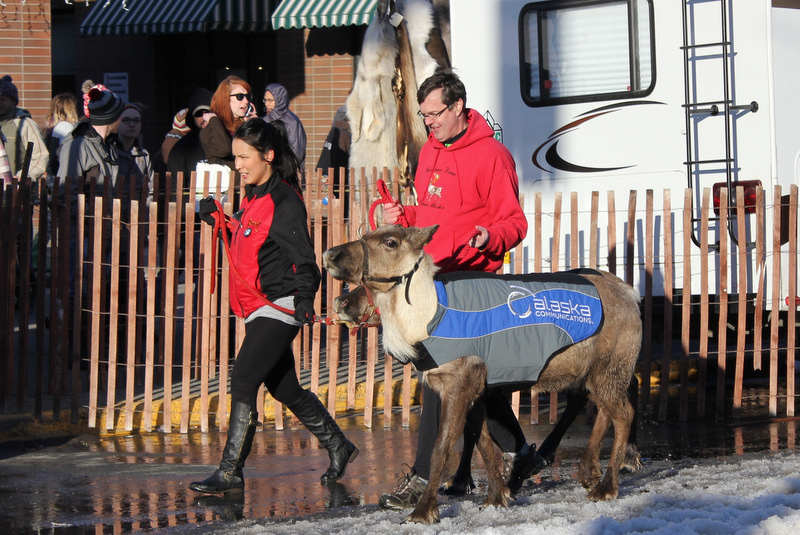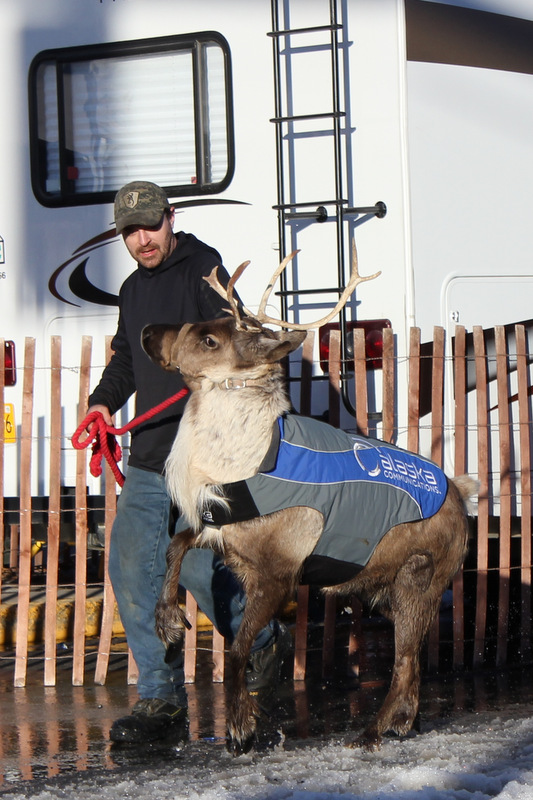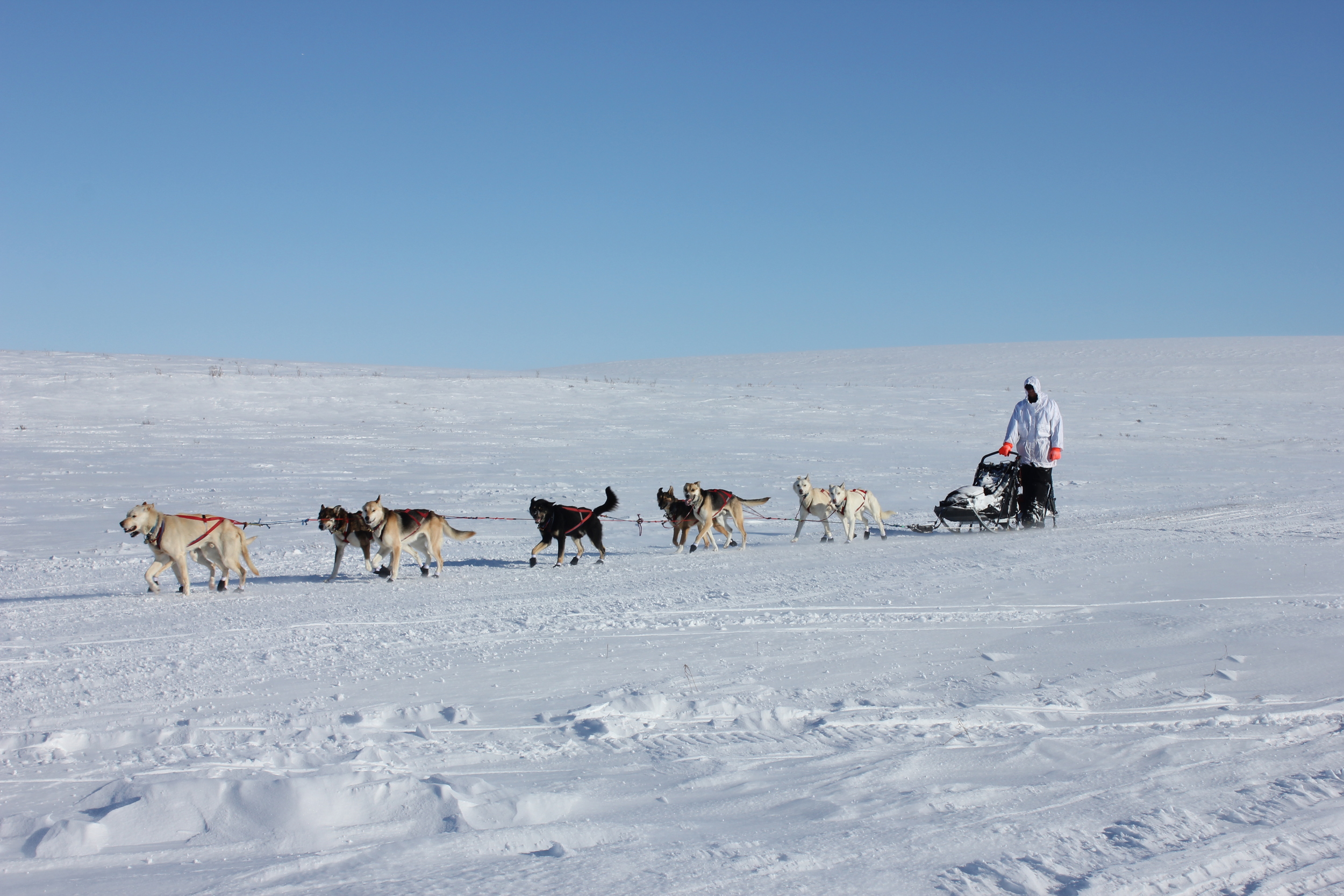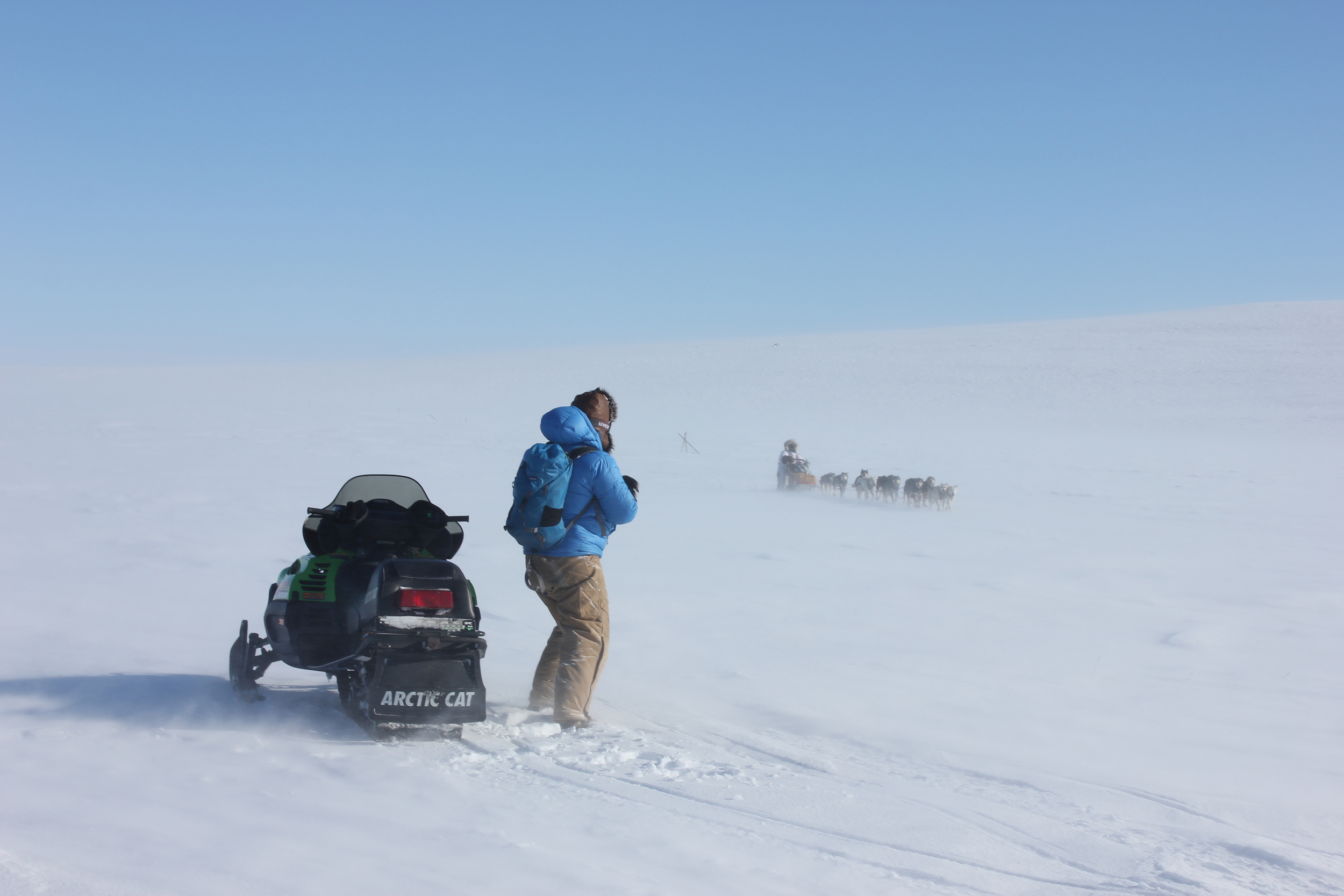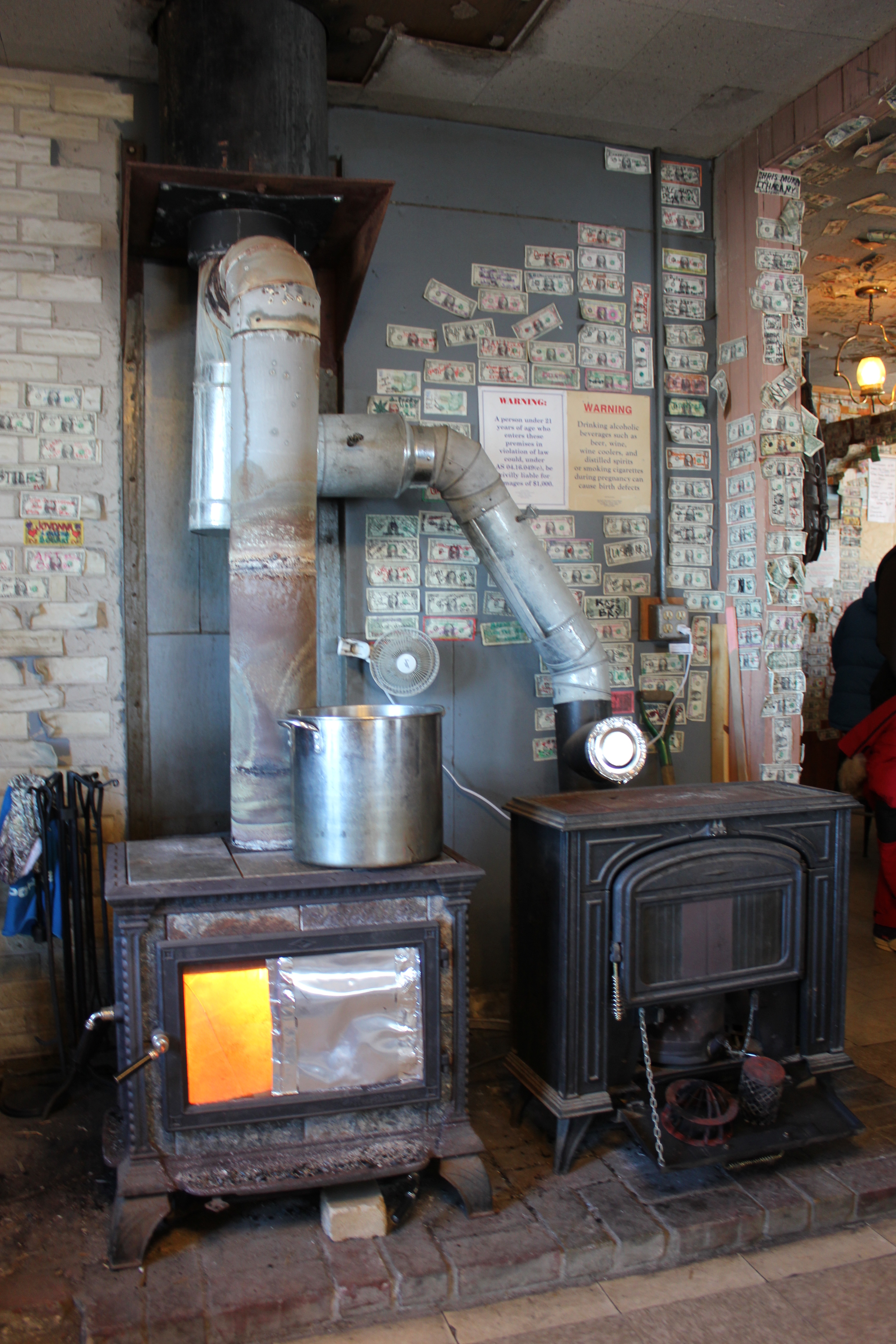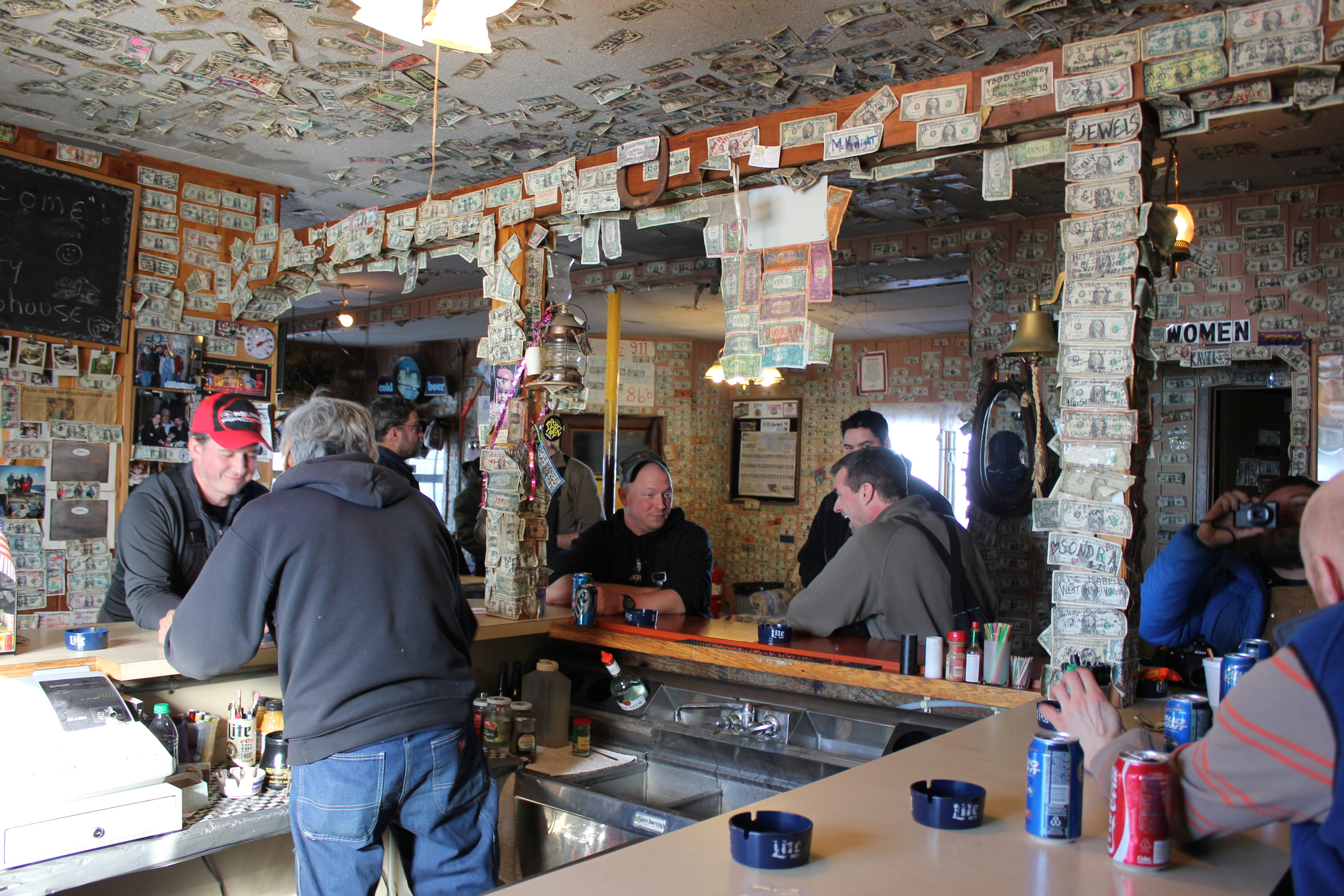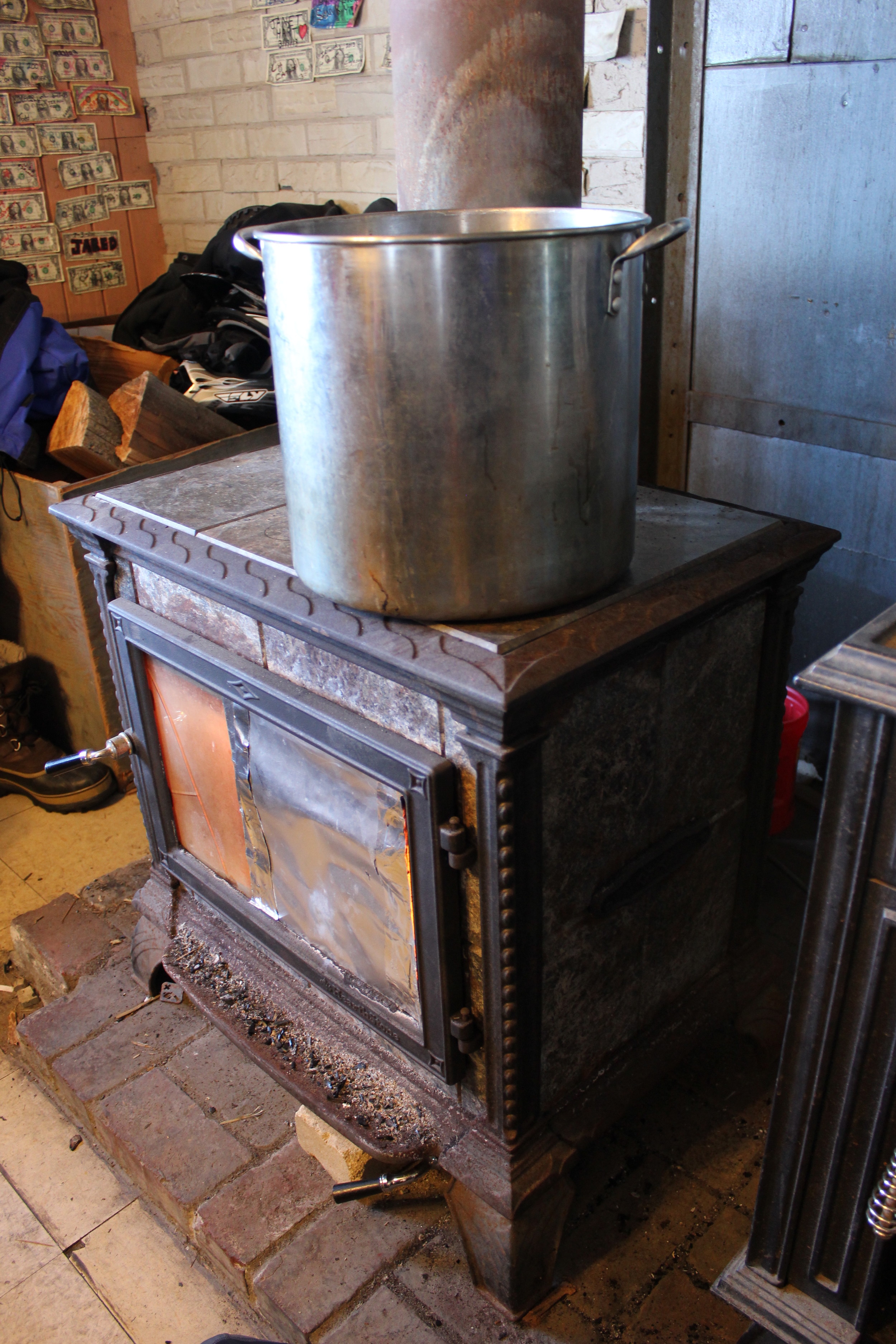Over 500 loads of snow were trucked in to downtown Anchorage to prepare for the Ceremonial Start of the 2015 Iditarod and the Running of the Reindeer – two long-awaited and eagerly anticipated events of Fur Rendezvous, the largest winter festival in North America. It's uncommon for Anchorage to have a drought of snow in the winter months, but these past few months have proven especially difficult for dog mushers and other winter athletes who usually revel in the winter climate this time of year. Regardless, from February 27 to March 8, thousands of Alaskans and visitors from around the world converged on downtown Anchorage for a sight to behold: eager and energetic sled dogs, Alaskan celebrity sightings, and more fur hats than you can count.
I spontaneously flew on a mileage ticket to Anchorage for this year's festivities. March 7 was an unseasonably warm March day with no snow despite earlier weather reports of 6+ inches of new snow accumulation. Bright and warm sun rays came out during the Iditarod Ceremonial Start, and the scent of reindeer sausage wafted all around. Super friendly folks and loud laughter was around every corner, and there was a real spirit in the air - the spirit of the best of Alaska.
I registered for the infamous Running of the Reindeer, which is sort of a play on Spain’s Running of the Bulls, but less intense or fatal. Then I donned the same St. Pauli's Girl dress I wore to welcome my friend, James Volek, across Nome's Iditarod finish line in 2013. This year's running event brought back bittersweet memories. The last time I ran with reindeer in 2012, I was about 60 pounds heavier and had zero cardiovascular endurance. This year? I literally ran with reindeer and was toward the front of the pack in the "Gals Herd." Once finished, I then got such a runner's high (first time ever, by the way) that I snuck into the "Groups Herd" and ran a second time! Addictive, I tell ya.
Mucho thanks to my friends, Cyndi and Michael, for rolling out the red carpet and being such terrific hosts. You know it’s been an epic weekend when friends in Bama say they've spotted you on the local FOX News channel.
"Running of the Reindeer" photos below courtesy of Michael Oliver. Thanks for capturing the moment, Michael!
